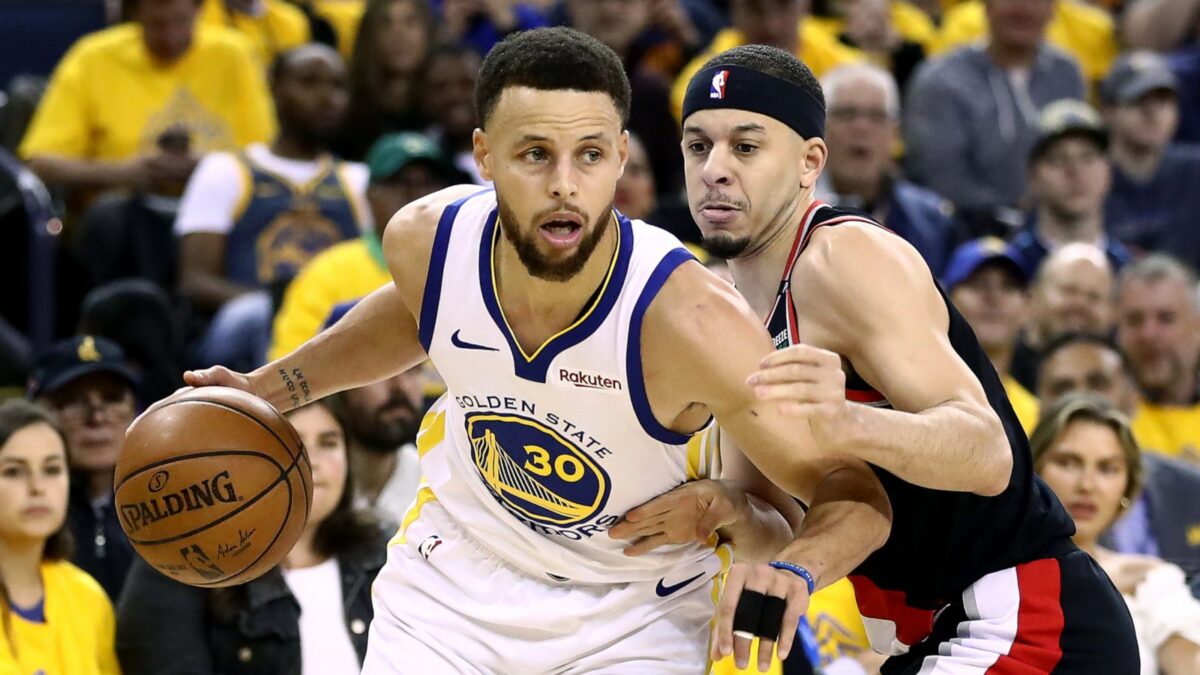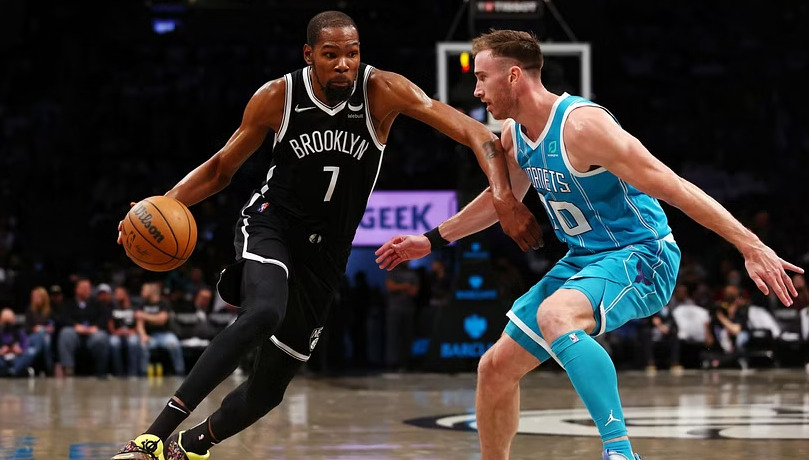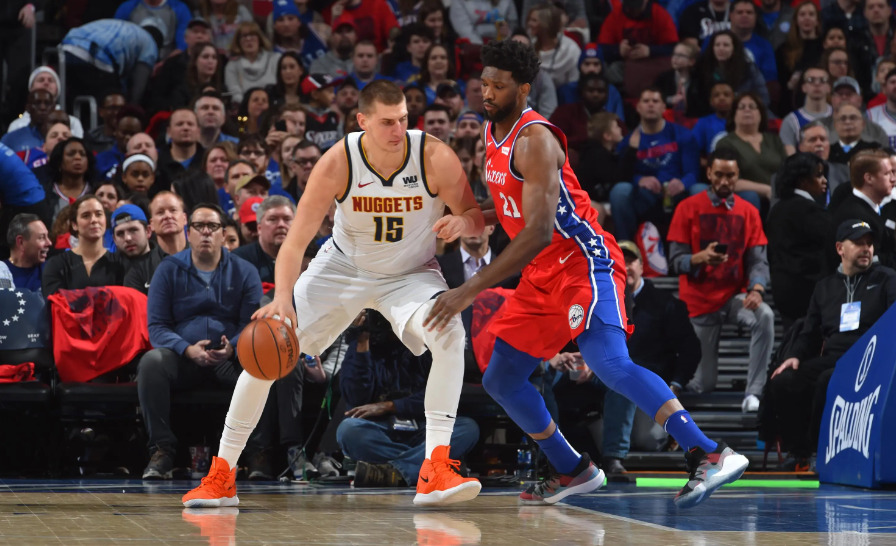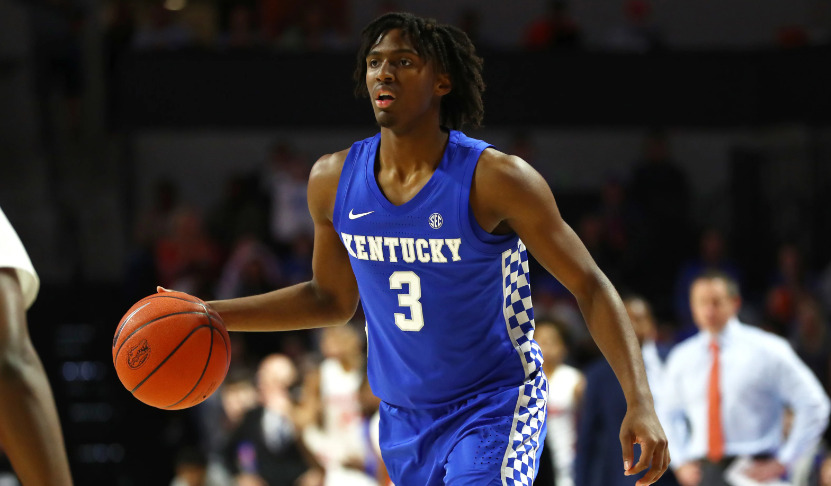
Are you trying to understand the different NBA positions? Then you’ve come to the right place. From point guards and shooting guards to small forwards and power forwards, this article will take you through each role, plus the four main hybrid roles in basketball. We’ll explore the offensive and defensive duties of each of these positions, as well as the skills needed to be successful, discussing some of the all-time greats in each one.
We’ll also explore footwork for centers, muscle for power forwards, agility for shooting guards, and ball handling for point guards. Whether you’re a player or fan, this article is sure to help you gain insight into each position’s responsibilities.
Point Guard
The point guard is the player who runs the offense for the team. They are usually the shortest and lightest players on the court, but they make up for it with their speed, agility and basketball IQ. Point guards have to be able to handle the ball without turning it over and create scoring opportunities for their team.
They also have to be able to read the defense and make the right decisions. A good point guard should be able to hit short range shots, make three-pointers, and facilitate the offense.
Duties
A point guard’s main job is to run the offense and get the team into the right position to score. On offense, they have to create scoring chances, set up the offense, and get the ball to their teammates in spots where they can score.

Point guards need to be able to play aggressive but smart full-court defense and try to tip the ball away from their opponents. Good court vision is also essential for a point guard, as they need to be able to find their teammates in the best scoring position.
Skills
It takes a lot of skill to be a successful point guard. A point guard needs to be quick and agile, have good judgment, be able to handle the ball like a pro, know how to score, run the offense like a boss, dish out assists, and play some mean defense.
Guards should focus on honing their dribbling, shooting, and ball-handling abilities as well as their ability to create shots and score. They should also have a well-rounded game and the ability to play multiple positions.
Shooting Guard
A Shooter is the one who puts points on the board. Shooting guards are often considered the most important position in basketball, as they are the primary scorers for the team. They are responsible for taking jumpers, threes, mid-range shots, and layups, as well as creating scoring opportunities for their teammates.
Shooting guards need to have a strong shooting ability, good ball handling and passing skills, and a high basketball IQ in order to be successful. Michael Jordan, James Harden, Kobe Bryant and Reggie Miller are some of the notable shooting guards. All these players have achieved great success in the sport.
Duties
A shooting guard’s gotta take jumpers, threes, and mid-range shots – that’s the name of the game! It is the responsibility of the shooting guard to score the ball, and they must be able to hit shots from beyond the arc and off the dribble.

Shooting guards must also move around the court to get open looks, be able to pass the ball, and defend their position against the opposing team’s shooting guard.
Skills
To be a shooting guard, you gotta have mad skills when it comes to shooting from the outside. A shooting guard needs to have their jump shot on lock if they want to be successful, as well as the ability to handle the ball and create their own shot.
Shooting guards must also be able to pass the ball and have some defensive skills in order to be a well-rounded player. Good ball handling and passing skills are essential for a shooting guard, as they must be able to create scoring opportunities for their teammates and get the ball up the court quickly.
It is also important for a shooting guard to be a good defender in order to shut down the opposition’s top scorer.
Small Forward
The small forward is a key role in basketball, requiring a player who can do it all – score, rebound, and defend. Small forwards are the jack-of-all-trades on the court, able to score, create mismatches, and be a threat on both offense and defense.
Cam Whitmore in the gym with Carmelo Anthony
— No Ceilings (@NoCeilingsNBA) June 18, 2023
👀
🎥 via @Cbrickley603 #NBADraft
pic.twitter.com/pqTZonRMbC
Some of the biggest names in the small forward position are LeBron James, Kevin Durant, and Larry Bird. Small forwards are a total game-changer, ’cause they can do it all. Having strength and agility as a small forward definitely gives you an edge, and some of the most iconic small forwards in the NBA are LeBron James, Kevin Durant, and Larry Bird.
Duties
A small forward’s gotta be ready to do it all. On offense, a small forward must be able to score, create mismatches, and be a threat on the court. They must also be able to pass the ball.
On defense, small forwards must be able to stay with their opponents, guard against both inside and outside shots, and have some shot-blocking skills. It’s essential for small forwards to stay sharp on defense so they can anticipate their opponent’s moves and react quickly.
Small forwards are key to the game because they can do it all – score, grab rebounds, and defend, plus they can create mismatches on the court that can give their team the edge.
Skills
It’s all about having a good mix of skills if you wanna be a successful small forward. Small forwards need to be able to do it all on offense – shooting, dribbling, scoring, and passing. Shooting is a must-have for small forwards if they want to put points on the board.

Having good ball handling skills is key for small forwards, because it gives them the ability to create their own shot and set up their teammates for success. Passing is key for small forwards because it gives them the chance to set up their teammates for scoring chances and keep the ball flowing on offense.
On defense, small forwards gotta be on top of their game, know how to stay with their opponents, and be able to guard against both inside and outside shots. Having a diverse set of skills is essential for small forwards to be successful on offense and defense, and to be able to adjust to different game scenarios.
Power Forward
A power forward is a spot on the court that needs a mix of muscle and height to get buckets close to the rim. They’re usually the second tallest player on the squad and hang out near the post. Power forwards are expected to score in the paint, set screens, and grab rebounds. They also have to be able to shoot from mid-range and beyond the arc.

Power forwards need to be strong to stay put in the paint, battle for boards, and go toe-to-toe with other brawny players. On defense, they need to be ready to block shots, challenge shots, and snatch up rebounds.
When it comes to the all-time great power forwards in the NBA, you can’t go wrong with Charles Barkley, Kevin Garnett, and Tim Duncan.
Duties
Power Forwards are usually the second tallest players on the court and they’ve got a lot of jobs. On offense, Power Forwards have to bring it, scoring in the paint, setting screens, and maybe even stepping out for some mid-range or three-point shots. On defense, they are in charge of blocking shots, challenging shots, and snatching up rebounds.
They need to create space for their teammates, so they can get some open shots. Screens are an effective way to do this. Power forwards also need to be able to dribble the ball with agility and control, like in the Crab Dribbling Drill.
Skills
Power forwards need to have high basketball IQ, be able to knock down short range shots, and be team players. They should also have good ball handling skills so they can execute the Crab Dribbling Drill.
Chandler Parsons setting the NBA record with 10 straight threes in one half 🔥pic.twitter.com/tPCTsEzQnH https://t.co/TAelbMphIk
— Bradeaux (@BradeauxNBA) June 17, 2023
Power forwards should also be able to play multiple positions, as well as be able to take open shots, create shots, and read the court for scoring opportunities. It’s important for power forwards to have a good mid-range jump shot, three-point shooting ability, and the ability to shoot from the outside in order to spread the floor and create scoring opportunities for their teammates.
In order to be a well-rounded player, power forwards need to be able to play all five basic positions on the basketball court.
Center
Centers are the tall and strong guys who hang out near the low post in basketball. They are the backbone of any team, responsible for snagging rebounds, scoring close shots, and being agile on defense. Centers can often be the difference between a win and a loss for a team, and their importance cannot be understated.
Centers usually operate in the key area of the court and are primarily responsible for scoring close to the basket, either off offensive rebounds or quick passes from the perimeter players. Centers must have some serious muscle in order to stay put in the paint, set screens, and battle for boards. They must also be quick on their feet, have solid footwork, and have mad rebounding and finishing skills.

Some of the most iconic centers in NBA history are Shaq, Wilt the Stilt, Bill Russell and the Joker. Some of the biggest names in the center position in the NBA today include Karl Anthony-Towns, Al Horford, Demarcus Cousins, Marc Gasol, and DeAndre Jordan.
Duties
The main offensive responsibility of a center is to score close to the basket, either off offensive rebounds or quick passes from the perimeter players. Defensively, a center’s main responsibility is to protect the hoop. When it comes to rebounding, a center’s job is to snag that basketball and get it back in play. Centers must also be able to guard the guard positions, as well as the other different positions on the court.
Centers must also be able to create shots for themselves and their teammates, and be able to find scoring opportunities. They must also be able to handle the ball, call out plays and defensive schemes, and be versatile enough to play multiple positions. Centers also need to be able to shoot from the three-point line, as well as make short range shots and jump shots. They must also have a high basketball IQ and understand how to read the game.
Lastly, Centers must be team players who are willing to put in the time and effort to practice basketball drills and improve their skills.
Skills
The skills required to be a successful center are quite extensive. Centers need to have some serious strength to stay put in the paint, set screens, and battle for boards. They must also be able to move quickly and switch up their game plan on the fly. This means they need to be able to get open for passes, protect the hoop, and swat away shots. They also need to have great footwork, as it’s all about being able to move around the court with grace and staying balanced while posting up, setting screens, and protecting the paint.
The last center to win #NBAFinals MVP before Nikola Jokic…
— NBA History (@NBAHistory) June 14, 2023
SHAQ in 2002!
36.3 ppg
12.3 rpg
3.8 apg
2.8 bpg pic.twitter.com/DRsWjdYOgT
Centers need to have a well-rounded game, being able to shoot from the three point line, make short range shots, and create their own shots. They must also be able to handle the ball and understand the different positions on the court. Lastly, Centers must be versatile players who can play multiple positions and take advantage of open shots. A center must have shooting skills and understand the game of basketball in order to truly be a well-rounded player.
Hybrid Positions
Hybrid positions in basketball refer to players taking on one of the five traditional positions, but not necessarily playing it in the same way as everyone else. These hybrid positions mix the abilities of two standard positions and help create mismatches for the other team. Hybrid roles are elements seen a lot in the game of basketball. The four main ones being combo guard, point forward, stretch 4 and swingman.
It’s essential for ballers to be all-arounders these days, since the game has changed so much and you need to be able to switch up your skill set quickly. You can expect to see hybrid positions popping up in high school games.
Combo Guard
A combo guard is a player who can do it all – they’ve got the ball-handling skills of a point guard, plus the scoring abilities of a shooting guard. This type of guard is incredibly popular in today’s game as it provides for a lot of versatility and mismatches for opponents. To be a successful combo guard, you have to have your ball handling on lock, be able to dish out assists like a pro, and have a reliable jump shot. Plus, you need to make quick decisions and read the game well.

Some of the most legendary combo guards to ever grace the NBA include Allen Iverson, James Harden, Dwyane Wade, and Devin Booker. Teams can definitely have two combo guards on the court as it can be a great way to switch up defensive and offensive plays, plus it can create some mismatches for the other team.
Stretch Four
A stretch four is a power forward who can shoot the long ball with accuracy, making it difficult for the defense to guard them. This type of player brings a whole new level of offense to the court, as they can stretch the defense and disrupt traditional defensive schemes.
Dirk Nowitzki is the original stretch-four player and is a prime example of the type of player you can expect in this role. He was one of the first big men to be a sharpshooter from beyond the arc, and he revolutionized the game in his time.
Swingman
A swingman in basketball is a player who can rock both the small forward and shooting guard spots like a pro. This type of player meshes the talents of a small forward and shooting guard, playing both inside and out. A Swingman is a real jack-of-all-trades, able to move between inside and outside play with ease.

This versatility makes it tough for defenders to know how to handle them, since they can play both inside and outside and switch up their approach. Kobe Bryant, Michael Jordan and Jerry West are considered to be some of the greatest Swingmen in the NBA. They have set a benchmark for generations to follow.
Point Forward
A point forward is a player who can handle the duties of a point guard and mix it up with the skills of a small forward or power forward. This hybrid role requires a player to be able to handle the ball and pass like a point guard, but also make decisions from the post like a power forward. A point forward has an offensive skill set that is pretty similar to a point guard’s, but with the added ability to make jump shots, three-pointers, and even post up from the post position.
When your squad has the rock, you gotta be the one making the plays. And when it’s time to D up, you gotta be ready to shut down the other team’s forwards. If you’re talking about the greatest point forwards ever to play in the NBA, you’ve got to mention LeBron James, Larry Bird, and Scottie Pippen. All three of these legends were able to find open shots for themselves and their team, make plays for others, and defend power forwards and centers.
Point forwards are essential for teams looking to move away from the traditional point guard and power forward positions on the court.
Summary
Over the decades, basketball has evolved a great deal from its origins in 1891. The game has seen changes to rules and positions, bringing us to the world of hybrid positions that heavily relies on players being able to adapt to different roles throughout the game. With the evolution of positions, some classic archetypes have remained while others have faded over time.
The point guard is usually considered the leader of the team with ball-handling as its biggest asset, looking to create scoring positions with fundamental plays. On the other hand, shooting guards are usually experienced scorers who can hit shots from any range and pass if needed. Small forwards are reliable all-rounders whose versatility brings them success, while power forwards tend to play close to the basket, rebounding and creating openings. Centers focus down low, dominating the defense there while grabbing boards and protecting the rim.

To bring it into a modern-era context, hybrid players have become more prevalent over time to meet the demands of a fast-paced game. Combination guards are very versatile, having the ability to play both point and shooting guard. Stretch fours have started to become more popular too for their long-distance prowess and swingmen who can excel in both small forward and shooting guard roles. Even point forwards have emerged, capable of handling both PG and PF duties.
Whichever position you choose to maintain – from time-honored classics to hybrid variations – one thing will remain the same: the need to possess the necessary skills, athleticism, and mental toughness to compete at the professional level. Basketball is an ever-changing sport that requires creativity and adaptability, no matter what your role is. When all is said and done, positions may come and go, but basketball itself remains.
Frequently Asked Questions
What do NBA positions mean?
NBA positions refer to the five traditional job roles for basketball players on the court. Point guards lead the team and set up offensive strategies, shooting guards focus primarily on scoring points, small forwards cross between offense and defense, power forwards are big guys who rebound and block shots, and centers are generally the tallest players focusing mainly on defense and rebounding.
Together, these positions make up a winning strategy and form the backbone of any successful NBA team.
What are the 5 main positions in basketball?
Basketball has five positions each based on player size, skill set, and role: center, power forward, small forward, point guard, and shooting guard. Centers are typically the tallest players, used for rebounding and blocking shots near the basket, while guards are usually shorter and focus on ball handling and shooting from outside. Power forwards often play a combination of positions with a blend of strength and shooting abilities.
How many positions are in NBA basketball?
Basketball is a team sport played by five players on each side. There are five positions in basketball: point guard, shooting guard, small forward, power forward and center. Each position offers different responsibilities in the game, and each one is essential to the team’s success.





